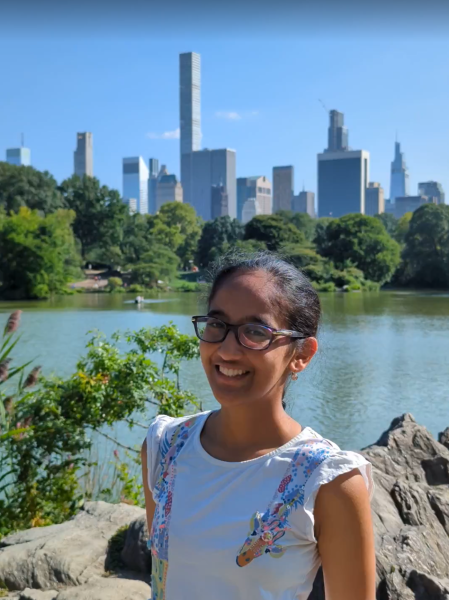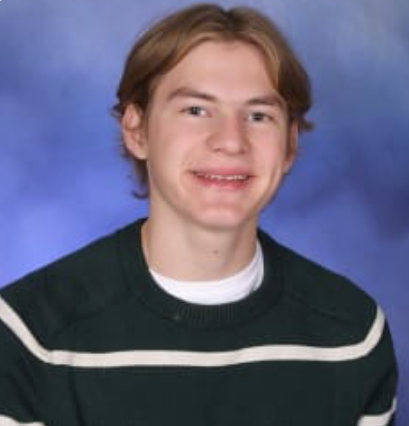Officially branded as “Hope in Action,” Lakeside’s new strategic plan aims to lay out the vision for where Lakeside as an institution will spend its energy and attention for the foreseeable future. Academic Dean (5-12) Mr. de Grys says the development of the strategic plan was guided by the question, “What does our school community need right now?” The plan sets out to reaffirm Lakeside’s values and increase the breadth of available opportunities for students. In Head of School Dr. Bynum’s written introduction to the strategic plan, he mentions that “the strategic plan aims to cultivate joy, hope, and care within our school community” and that it “will be a living, dynamic tool that guides our work, the choices we make, and the ways we interact with each other.”
If the aim of cultivating joy, hope, and care appears vague, according to Dr. Bynum and Upper School Director Mr. Boccuzzi, it was a decision made with intention. Rather than being hyper-focused on data-driven, results-based initiatives, both find it better to lean on ideals and, according to Dr. Bynum, develop a “vision that complements both the head and the heart.” Though Mr. Boccuzzi pointed out that an English or History teacher might call the vision statement “a weak thesis statement,” he also said, the opposite—one that is hyper-specific— would hinder what the strategic plan hopes to accomplish: “We don’t want every student coming through Lakeside to follow just one path that’s like, here’s how you get joy, hope, and care.”
Not every student will take every class, do every sport, or join every club, but with the wide net the vision statement casts, Mr. Boccuzzi and Dr. Bynum hope each student’s needs will be better met. Though the rigor of Lakeside’s curriculum will remain a significant priority, through the strategic plan, Dr. Bynum said Lakeside has the opportune moment “to bring a sense of rigor to joy, hope, and care, so it doesn’t seem less important than As and Bs.”
Behind the scenes, the strategic plan steering committee — composed of members of the Board of Trustees and the administration — has been hard at work over the past year and a half to develop what is soon to be presented to the entire school community. Working with a professional consulting firm, members of the committee spent sessions surveying students, parents and guardians, alums, faculty and staff, and trustees to determine what would be best for Lakeside to focus on within the next few years. These first six months of the process were spent taking in 300 pages of notes, finding overlap between concerns and hopes of all members within the Lakeside community. More recently, the last few months have been spent distilling the information gleaned from discussions into three key priority areas: educational excellence; community experience, engagement, and impact; and infrastructure, operations, and capacity.
The driving idea behind the priority of educational excellence is to determine how to best engage and immerse Lakeside students in their learning and deepen their voice and agency within academics. “Educational excellence has always been the heart of our enterprise,” Dr. Bynum affirmed, and the strategic plan recognizes this. In the future, teachers will focus on giving students choices within the scope of the class as well as incorporating innovative technologies like generative AI into the curriculum.
In addition to further developing standards of educational rigor, the plan hopes to make community experience and engagement a more significant aspect of a Lakeside education. Rather than using the term “extra-curricular,” the steering committee emphasized the notion of “co-curricular,” where programs like Service Learning and Outdoor Programs work in tandem with the classes students at Lakeside take each year.
This focus on community experience aims to further integrate community building into the school day, through changes to the advisory model and the ongoing pilot of a class dean for the class of 2028. The steering committee also expressed hopes to expand the Lakeside Educational Enrichment Program (LEEP), partner with The Downtown School, further promote community well-being through Human Development and Health, and hold programming on intergroup dialogue and our shared values, to cultivate a culture of respect and giving back to the community.
The final priority area of the strategic plan is infrastructure, operations, and capacity. As Mr. Boccuzzi acknowledges, “the first two [priority areas] are going to be the ones that [students] are going to feel lived on a regular basis… but all three are necessary for the plan to work.” Infrastructure exists as a foundation to provide resources and spaces for the programs that are part of educational excellence and community experience. One of the main tactics to achieve infrastructure goals will be the construction of the new building estimated to be completed by the fall of 2026. With a new space for English classes and science labs, Moore Hall will be renovated as a potential student wellness center. Other sub-points within this priority area include safety upgrades and parking/transportation expansion.
While the strategic plan is about to be rolled out, with a formal document detailing the initiative set to be published in early December on the Lakeside website and in the magazine, there is still work to be done in fully accomplishing its goals. In the spring and summer of 2025, teachers and other staff/faculty members will spend professional development days and summer break to workshop how they might implement changes in accordance with the plan. According to Mr. de Grys, “you’ll start seeing … some [changes] … this fall,” while some changes “might be bigger, broader things that might take a few years to spin up or that we need to raise some money for.”
Dr. Bynum and Mr. Boccuzzi also detailed the importance of feedback and adaptability during the process of implementing the strategic plan. The administration has recently held meetings with SALT leadership, Student Government, and the Parent-Guardian Association to take into account their suggestions for how they want to see the strategic plan play out. Dr. Bynum notes that the strategic plan will be part of an annual iterative process: It’s “not something we want to put on a shelf.” Both enacting and developing the strategic plan will be an ongoing process where the voices of the community are heard and utilized. The administration will be taking opportunities to seek feedback in intentional ways from different parts of the Lakeside community.
At the end of the day, the strategic plan is meant to benefit the students of the Lakeside community for years to come. As Dr. Bynum emphasized, “We’re excited about a lot of things in the plan, but I think your ideas and lived experiences make it happen. It’s all about you. It’s not about me, or Ryan [Boccuzzi], or anybody else. It’s about you. This is about the kids.”




